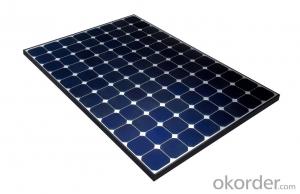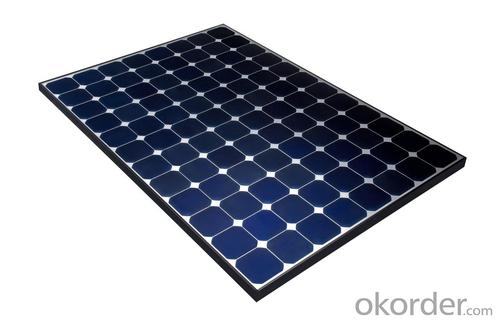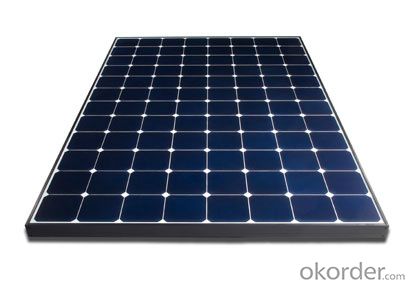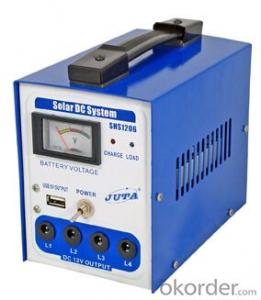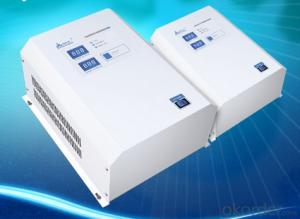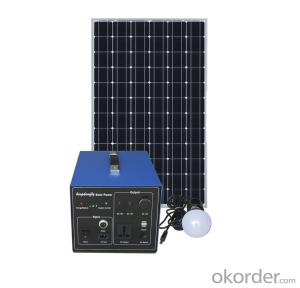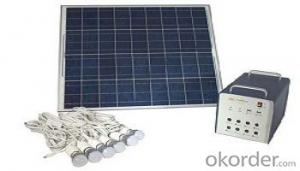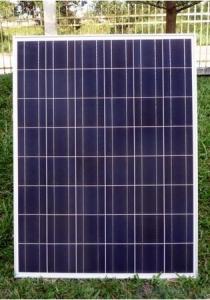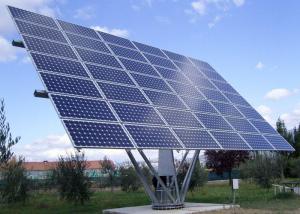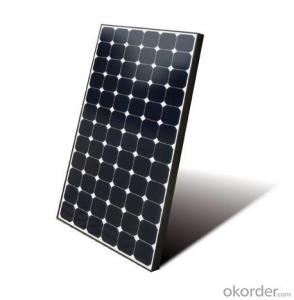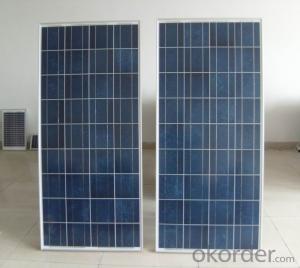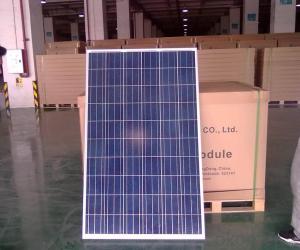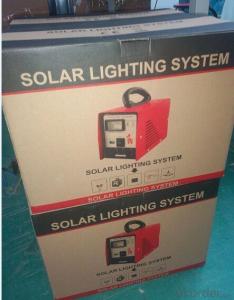80w Solar Energy Systems Blaine - Approved by TUV UL CE
- Loading Port:
- Shanghai
- Payment Terms:
- TT OR LC
- Min Order Qty:
- 1 pc
- Supply Capability:
- 100 pc/month
OKorder Service Pledge
OKorder Financial Service
You Might Also Like
Specification
80W Solar Home Solution Approved by TUV UL CE
Production description
PV array:
Convert sunlight instantly into DC electric power. Formed by the solar modules (also called photovoltaic
modules) in accordance with the system requirements for series and parallel.
Solar charge controller:
A charge controller may be used to power DC equipment with solar panels. The charge controller
provides a regulated DC output and stores excess energy in a battery as well as monitoring the battery
voltage to prevent over charge or over discharge. An inverter can be connected to the output of a charge
controller to drive AC loads.
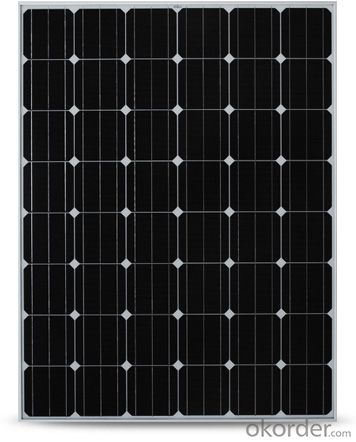
Feature
1.High conversion efficiencies resulting in superior power output performance.
2.Outstanding power output even in low light or high temperature conditions
3.Optimized design for ease of soldering and lamination
4.Long-term stability,reliability and performance
5.Low breakage rate
6.Color uniformaity
Physical characteristic
1. Rigorous quality control meets the highest international standards.
2. High-transmissivity low-iron tempered glass, strong aluminium frame.
3. Using UV-resistant silicon.
4. IS09001/14001/CE/TUV/UL
- Q: What is solar energy?
- Solar energy is the renewable form of energy derived from the sun's radiation, which is harnessed using various technologies such as solar panels or photovoltaic cells to convert sunlight into electricity or heat.
- Q: Can a solar energy system be installed on a thatched roof?
- Yes, a solar energy system can be installed on a thatched roof. Thatched roofs are made of natural materials like straw or reed, which can pose some challenges for installation. However, with proper planning and precautions, it's possible to mount solar panels on a thatched roof. The installation process may require additional measures to ensure the integrity of the roof and prevent any damage to the thatching materials.
- Q: Can solar panels be installed on floating platforms or structures?
- Indeed, it is possible to install solar panels on floating platforms or structures. This cutting-edge technique is referred to as floating solar or floating photovoltaic (PV) systems. These systems comprise solar panels that are mounted on floating platforms and positioned on bodies of water such as lakes, reservoirs, or even the ocean. Floating solar panels offer several advantages when compared to traditional ground-mounted or rooftop solar installations. Firstly, they can take advantage of unused space on water bodies, especially in areas where land is scarce or expensive. This can be particularly advantageous in densely populated regions or places with high land costs. Secondly, floating solar panels can help to reduce water evaporation from reservoirs, lakes, or other bodies of water, thereby conserving valuable water resources. Furthermore, the water beneath the panels aids in cooling them, thereby enhancing their overall efficiency and energy production. Moreover, floating solar panels can be simpler to install and maintain in comparison to ground-mounted systems. They often require less land preparation and can be deployed and relocated relatively quickly. Maintenance and cleaning of the panels can also be easier, as they can be accessed directly from the water surface. In recent years, floating solar systems have gained popularity and have been successfully implemented in various countries worldwide. They have proven to be a viable and sustainable solution for generating clean and renewable energy, all while addressing land limitations and water preservation. In conclusion, it is possible to install solar panels on floating platforms or structures, offering an innovative and efficient means of harnessing solar energy while utilizing underutilized water surfaces.
- Q: Are there any insurance considerations for solar energy systems?
- Solar energy systems have several insurance considerations to take into account. The first and most important consideration is to ensure that the system is sufficiently insured against damage or loss. This typically involves obtaining property insurance coverage that specifically includes the solar panels and related equipment. In addition, liability insurance is crucial for solar energy systems. This insurance protects against any damages or injuries that may arise from the system, such as property damage or personal injury caused by a falling panel. The liability coverage should be enough to cover the potential risks and liabilities associated with installing, operating, and maintaining the system. It is also important to think about business interruption insurance. This type of coverage provides financial protection in case the solar energy system becomes damaged or malfunctions, resulting in a loss of power production and revenue. Business interruption insurance can help cover the costs of repairs, replacement equipment, and any income lost during the downtime. Lastly, it is advisable to seek guidance from an insurance professional who specializes in renewable energy systems. They can ensure that all potential risks and exposures are adequately covered. They can also help identify any additional insurance considerations specific to the solar energy system and provide guidance on the appropriate types and levels of coverage needed to protect the investment effectively.
- Q: How does the age of a solar energy system affect its performance?
- The age of a solar energy system can significantly affect its performance. Over time, solar panels can experience a decrease in efficiency due to various factors. One of the main factors is the degradation of the photovoltaic cells themselves. The cells can deteriorate over time due to exposure to sunlight, extreme temperatures, and other environmental factors. This degradation can result in a decrease in the system's overall power output. Additionally, the components of the solar system, such as inverters and wiring, may also experience wear and tear over time. Inverters are responsible for converting the direct current (DC) generated by the solar panels into usable alternating current (AC) electricity. As they age, inverters can become less efficient or even fail, which can affect the system's performance. Another aspect affected by the age of a solar energy system is the technology itself. Solar technology is constantly evolving, and newer systems tend to be more efficient and produce higher power outputs compared to older systems. Therefore, older solar energy systems may not be able to match the performance of newer, more advanced systems. Regular maintenance and inspections can help mitigate some of the performance issues related to the age of a solar energy system. Cleaning the panels to remove dirt and debris, checking for any loose connections, and ensuring that the system is properly aligned can all contribute to maintaining optimal performance. In conclusion, the age of a solar energy system can impact its performance due to the degradation of photovoltaic cells, wear and tear on components like inverters, and the advancements in solar technology. Regular maintenance and staying up to date with the latest advancements can help prolong the lifespan and optimize the performance of a solar energy system.
- Q: Are there any disadvantages to installing a solar energy system?
- Yes, there are a few disadvantages to installing a solar energy system. Some of the main drawbacks include the high upfront cost of installation, the need for sufficient sunlight to generate optimal power, and the requirement for ample space to accommodate the solar panels. Additionally, solar energy systems can be less efficient during cloudy or rainy periods, and their production may not align with peak energy demands. Finally, the maintenance and occasional replacement of components can be costly and time-consuming. Despite these disadvantages, the long-term benefits and environmental advantages of solar energy make it an increasingly popular and viable option for many households and businesses.
- Q: Can solar energy systems be used for powering off-grid eco-retirement communities?
- Yes, solar energy systems can be used effectively for powering off-grid eco-retirement communities. Solar panels harness the sun's energy and convert it into electricity, providing a sustainable and renewable power source. Off-grid communities can utilize solar energy to meet their electricity needs, reducing their reliance on fossil fuels and minimizing their environmental impact. Additionally, solar energy systems can be easily installed and maintained, making them a practical and cost-effective solution for powering eco-friendly retirement communities that are disconnected from the traditional power grid.
- Q: What is the difference between a solar thermal system and a photovoltaic system?
- Solar energy systems come in different forms, such as solar thermal and photovoltaic systems, each serving distinct purposes. When it comes to heating, a solar thermal system takes the lead. It operates by harnessing the sun's energy and directly heating water or air. This is achieved through the use of solar collectors, which absorb sunlight and convert it into heat. The heated water or air can then be utilized for space heating, water heating, or even powering turbines to generate electricity. These systems are commonly utilized in residential, commercial, and industrial settings to provide efficient heating solutions. On the other hand, photovoltaic systems, often referred to as solar panels, are primarily designed to generate electricity. They make use of photovoltaic cells, typically composed of silicon, to directly convert sunlight into electrical energy through the photovoltaic effect. These cells are interconnected within solar panels, and multiple panels can be combined to create a complete photovoltaic system. The electricity produced by a photovoltaic system can be utilized to power electrical devices, appliances, or even be fed into the grid to offset energy consumption. To summarize, the key distinction between a solar thermal system and a photovoltaic system lies in their respective functions. While solar thermal systems focus on heating applications by directly utilizing the sun's energy to heat water or air, photovoltaic systems are specifically designed to generate electricity through the conversion of sunlight into electrical energy using solar panels.
- Q: How do solar energy systems impact homeowners insurance rates?
- Solar energy systems can have an impact on homeowners insurance rates, but it largely depends on the insurance provider and the specific terms of the policy. In general, installing a solar energy system can increase the value of a home, which may result in higher insurance premiums since the replacement cost of the property is higher. However, many insurance companies offer discounts or incentives for homeowners with solar panels, as these systems are considered to be a positive feature that reduces the risk of property damage and lowers energy costs. Additionally, some policies may include coverage for the solar panels themselves, protecting the homeowner from any potential damage or theft. It is important for homeowners to review their insurance policy and discuss any changes with their insurance provider to fully understand how the installation of a solar energy system may impact their rates and coverage.
- Q: How do solar energy systems impact the electricity pricing structure?
- Solar energy systems have a significant impact on the electricity pricing structure as they reduce the demand for traditional electricity from the grid. This decrease in demand puts downward pressure on electricity prices, benefiting consumers. Additionally, solar energy systems often generate excess electricity that can be sold back to the grid, further lowering prices. Overall, solar energy systems help to stabilize and lower electricity prices, making them more affordable for everyone.
Send your message to us
80w Solar Energy Systems Blaine - Approved by TUV UL CE
- Loading Port:
- Shanghai
- Payment Terms:
- TT OR LC
- Min Order Qty:
- 1 pc
- Supply Capability:
- 100 pc/month
OKorder Service Pledge
OKorder Financial Service
Similar products
Hot products
Hot Searches
Related keywords
